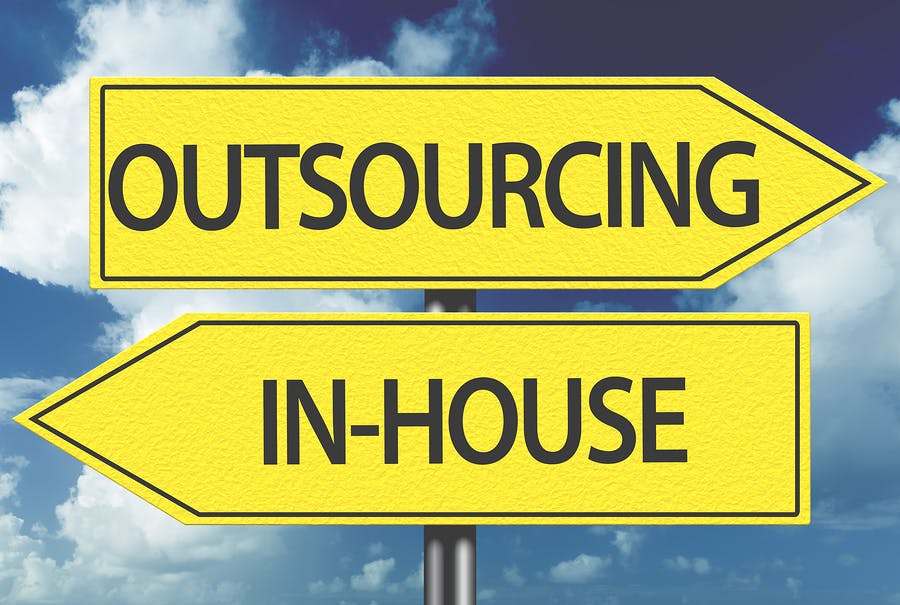Employee benefits and perks are critical in the fight to attract and retain top talent, especially for small and mid-size companies looking to scale. In fact, half of employees would leave their current job for one with better benefits. Additionally, the total cost of worker health benefits for large employers is expected to increase 5% to 6% to over $15,000 per employee by 2020, putting more pressure on employers. To meet these demands, companies that are getting off the ground – and smaller, established firms too — often turn to professional employer organizations (PEO) to offload HR tasks and take advantage of the savings they offer. Outsourcing benefits, payroll and other HR administrative tasks can be a significant help to smaller companies focused on growing their business, saving them as much as 35% on HR administration costs.
But as businesses grow, their priorities change. Organizations may realize they’ll need more support than what a PEO can offer. Some factors influencing this decision-making include:
- Cost — Companies pay per employee, so administrative costs of working with a PEO can outweigh the cost of hiring HR staff/implementing new technology.
- Customization — In most cases, companies aren’t able to fully customize their employee benefits package, making it difficult to use as a differentiator when competing for talent. This is more important than we realize — a recent report found that 91% of employees want customized compensation package offerings.
- Service — The flipside to outsourcing various HR functions is that companies must rely on their PEO for key information, and in many cases the response time is less than ideal.
Leaving a PEO is a challenge
After intertwining the organization with a PEO, transitioning away can feel overwhelming, when they already handle such complex and sensitive aspects of the business and employees’ lives. While the process shouldn’t be treated lightly, it doesn’t have to be daunting. There are key elements HR leaders can take into consideration to ease and simplify the transition.
First, when leaving a PEO, the team may have more responsibilities in the short run, as core functions are brought in-house. But this doesn’t mean organizations can’t turn to additional support. Organizations should look for payroll providers and human resource information system (HRIS) platforms [or benefits platforms] since companies will no longer be able to use the infrastructure provided by their PEO.
Today’s HRIS platforms automate rudimentary tasks for key HR functions to reduce costs and admin hassles. These platforms provide access to many of the same services PEO’s provide, including benefits management. Most also integrate with third-party vendors.
Cover all the bases
By automating administrative tasks, the HR team is able to spend more time focusing more on their employees’ needs and higher-level business goals. However, organizations need to be mindful of ending up with a fragmented sea of point solutions that are confusing for employees to navigate. HR leaders should consider the holistic ecosystem and seek solutions that are consolidated and easier to manage.
It’s also important to pay attention to easily overlooked details. For example, HR teams must remember to negotiate the inclusion of COBRA participants with the new insurance provider. Some PEOs charge sizeable fees to do this, even after the organization has exited. Preparation and attention to detail are key for a smooth transition.
Organizations must also communicate the changes to employees in a timely manner given that employees want stability. In addition to company emails and town halls, HR teams should equip managers with up-to-date information in case their direct reports have any questions about payroll or their benefits. Technology also plays a significant role in this by making information sharing more personalized. Through various digital tools, leaders in an organization can reach more people through different channels to ensure everything is aligned.
Despite some short-term potential logistical headaches, there are several positive changes that come with transitioning off of a PEO. For example:
- Greater health expertise and customization — While PEOs can provide expertise across a range of HR topics, working with a health benefits provider can provide more specific expertise to help develop a customized plan design.
- Broader carrier options — Although PEOs are able to negotiate low rates for employers (because they manage a large volume of employees across many clients), they also often work with a limited number of insurance carriers. Moving to an HRIS allows organizations to better meet employee needs and get greater use of their investment.
- Greater control of compliance requirements — When leaving a PEO, the organization has a better handle on federal and state employment laws, regulations for health plans like the Affordable Care Act, and other health regulations allowing them to respond to such compliance issues as they see fit. The downside is that now the organization bears complete responsibility for knowing what the rules are and when they change.
Moving on from a PEO takes a significant amount of planning and organization, but companies scaling and growing the talent pool can’t afford to continue outsourcing information and key data to third parties. Keeping core functions in-house and relying on automated tools for administrative functions can lead to better talent management and a more streamlined HR department.
